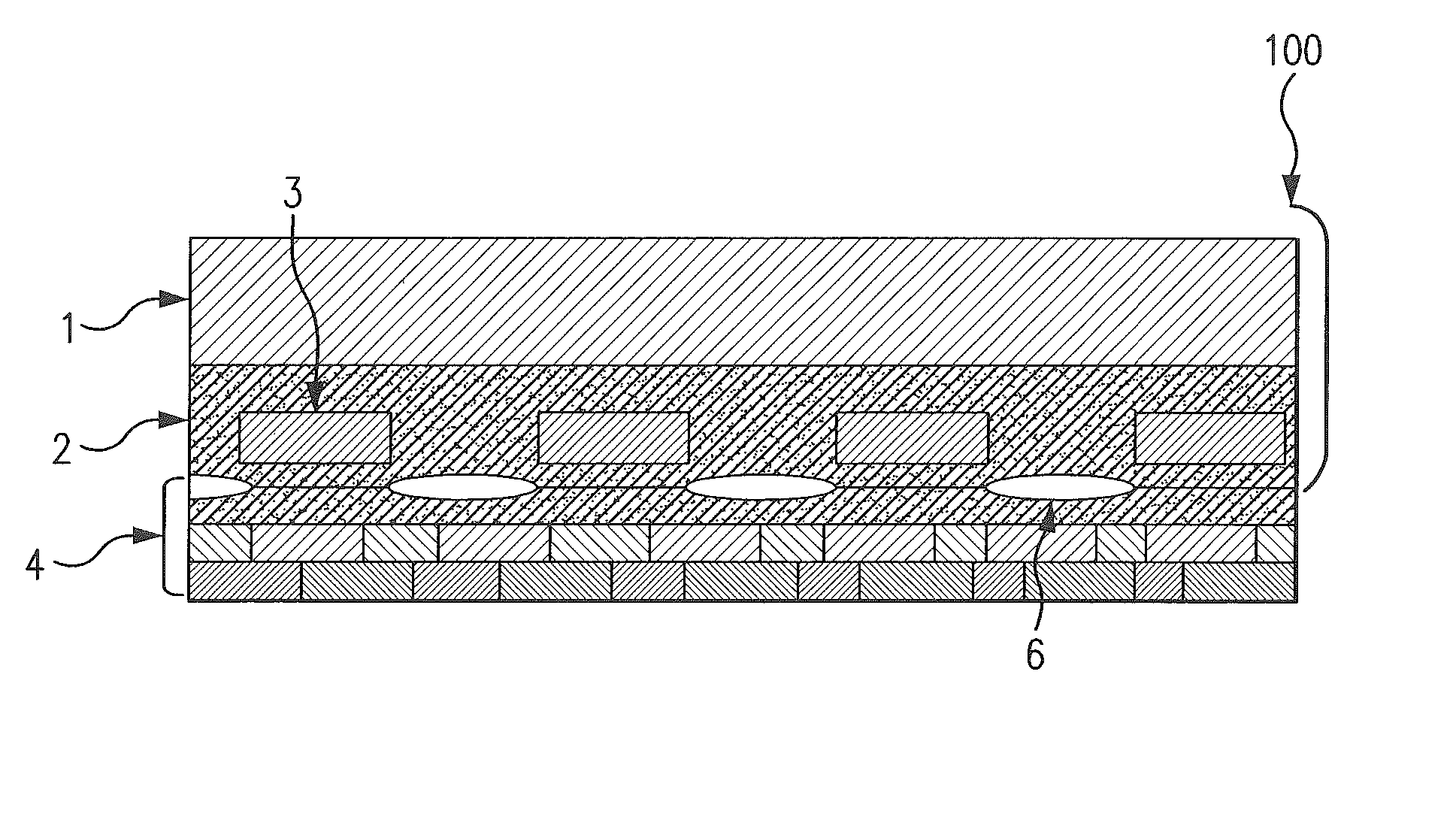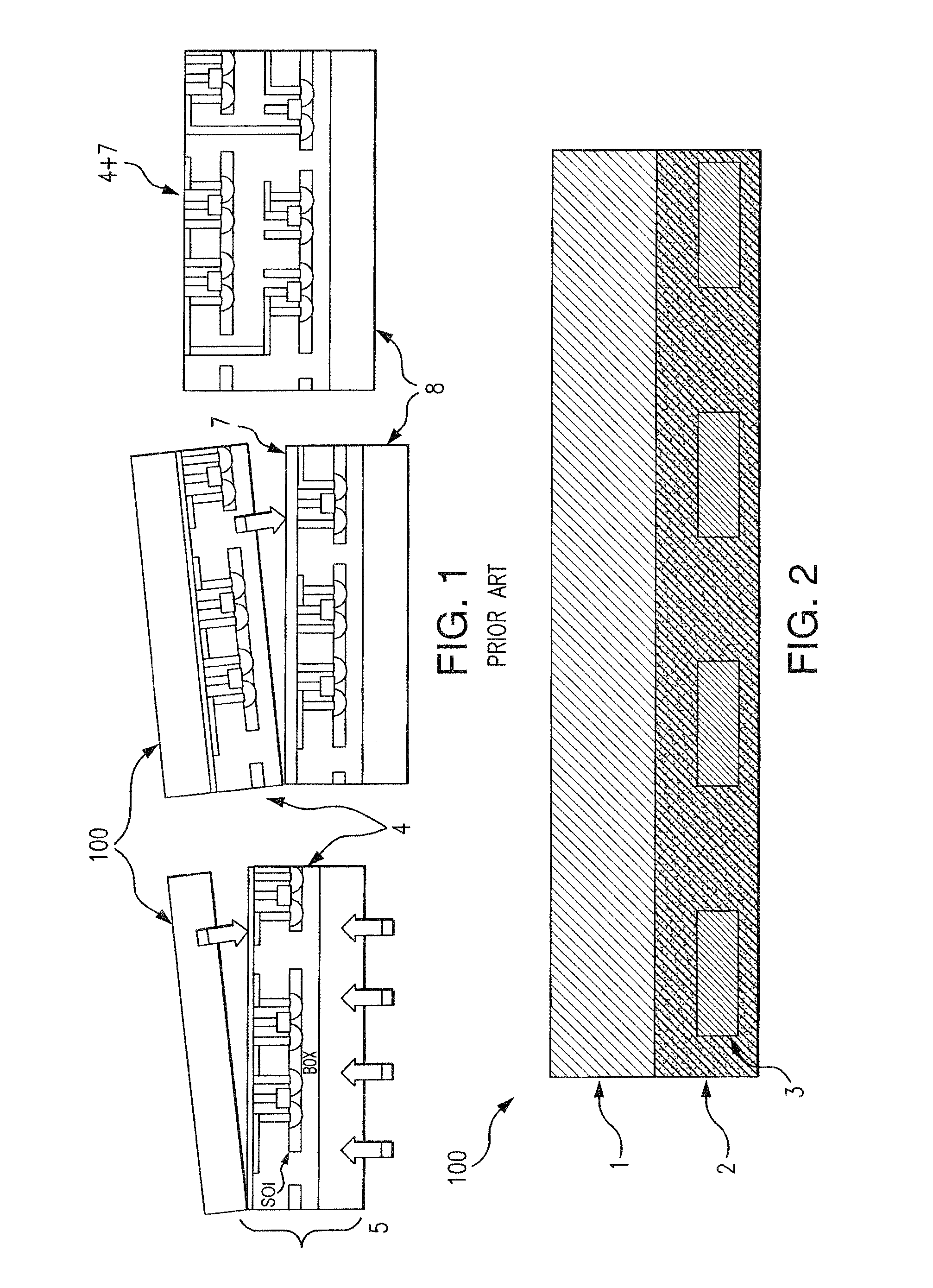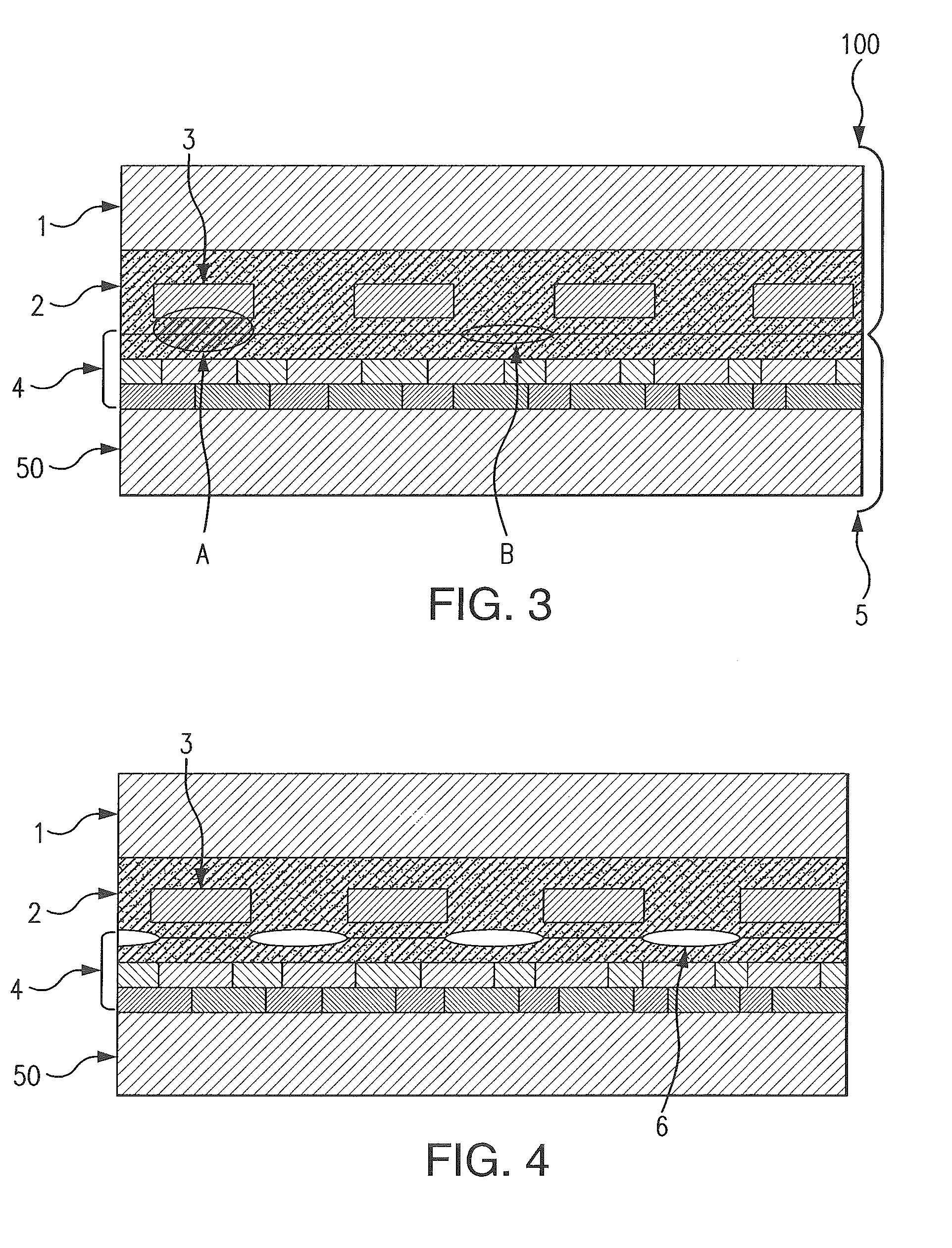Temporary substrate, transfer method and production method
a technology of transfer method and production method, applied in the field of temporary substrates, can solve the problems of increasing increasing the time required for detachment, and being very slow to process, so as to reduce the risk of premature detachment, shorten the time necessary for detachment, and gain processing time
- Summary
- Abstract
- Description
- Claims
- Application Information
AI Technical Summary
Benefits of technology
Problems solved by technology
Method used
Image
Examples
Embodiment Construction
[0052]In a preferred embodiment, the disclosure includes a temporary substrate having a bonding surface prepared for receiving an additional substrate that will transfer a thin layer. This temporary substrate comprises a principal part or support and a surface layer thereon with the surface layer having a plurality of inserts therein. These inserts are preferably made of a material having a coefficient of thermal expansion that is significantly different from that of the material constituting the surface layer.
[0053]Another preferred embodiment relates to a method for transferring a thin layer onto a temporary substrate. This method comprises preparing a bonding surface on a temporary substrate of the type described herein; bonding an original substrate to the temporary substrate at a bonding interface; removing part of the original substrate to provide a selected portion of the original substrate on the surface layer; heat treating the bonded substrates to form detachment zones but...
PUM
| Property | Measurement | Unit |
|---|---|---|
| surface roughness | aaaaa | aaaaa |
| width | aaaaa | aaaaa |
| width | aaaaa | aaaaa |
Abstract
Description
Claims
Application Information
 Login to View More
Login to View More - R&D
- Intellectual Property
- Life Sciences
- Materials
- Tech Scout
- Unparalleled Data Quality
- Higher Quality Content
- 60% Fewer Hallucinations
Browse by: Latest US Patents, China's latest patents, Technical Efficacy Thesaurus, Application Domain, Technology Topic, Popular Technical Reports.
© 2025 PatSnap. All rights reserved.Legal|Privacy policy|Modern Slavery Act Transparency Statement|Sitemap|About US| Contact US: help@patsnap.com



